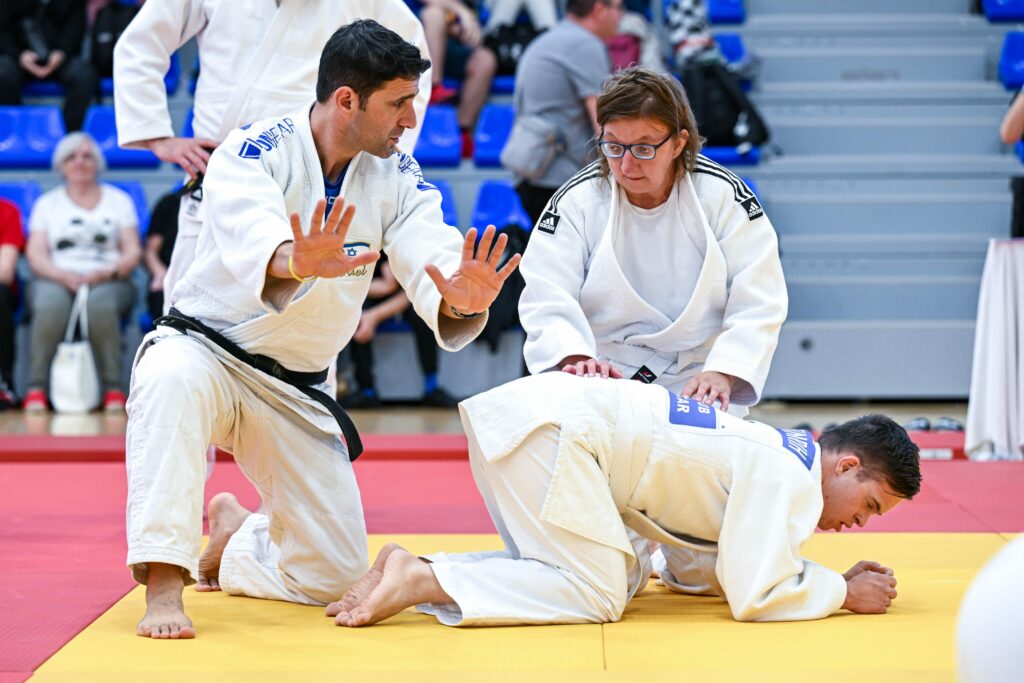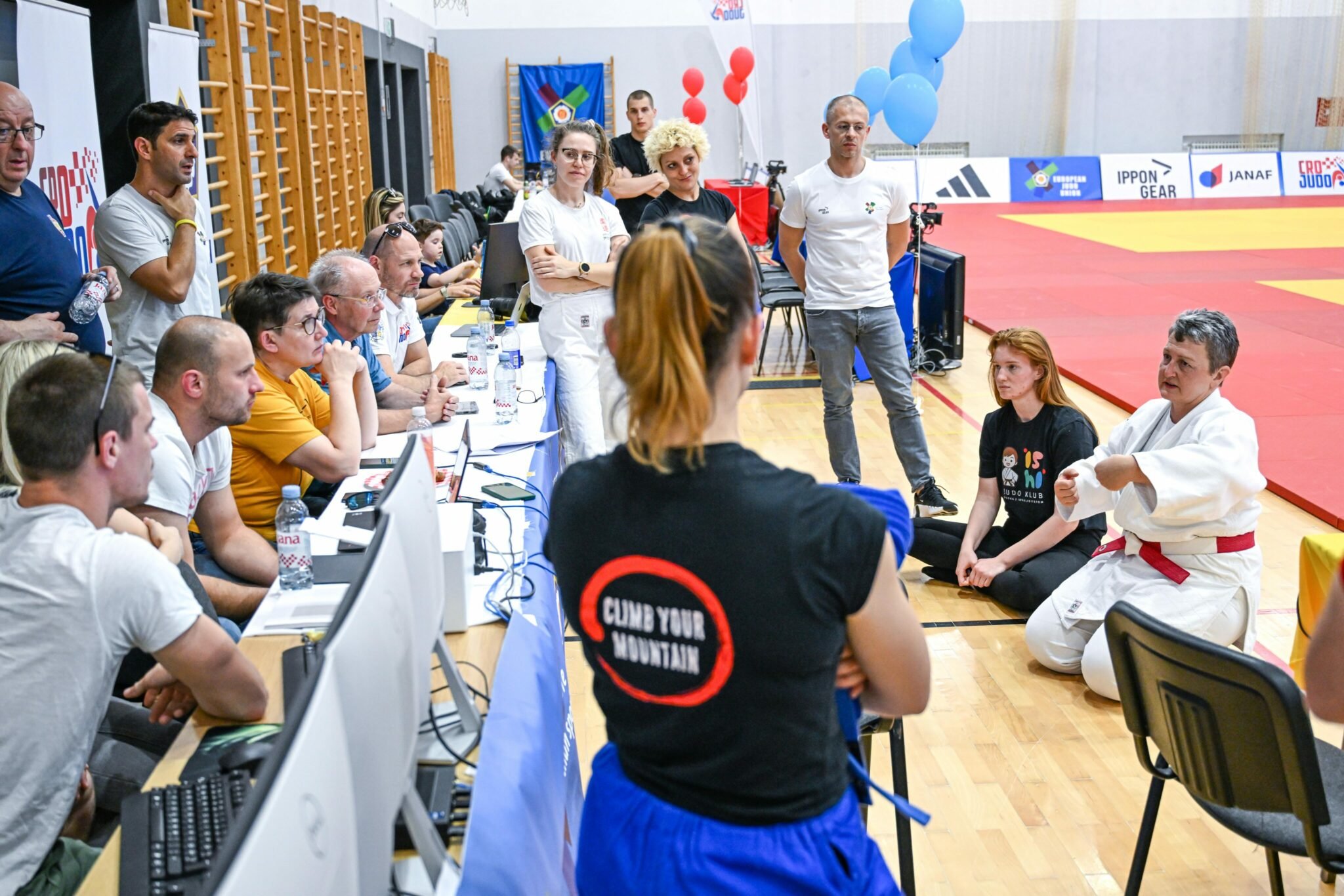High quality refereeing is sought after in any competitive circumstance, and in the case of refereeing in adaptive competition, compassion and empathy is equally as important.
After leading the divisioning sessions on day one of the Velika Gorica Get Together 2024, Kerry TANSEY then addressed the referees who would be responsible for the tournament on Sunday 2nd of June.
There are many additional responsibilities when assessing the athletes, as well as refereeing them, so their knowledge is really key to ensure the safety of all athletes during shiai, especially in levels 3, 4 and 5.
Speaking with Kerry TANSEY who led the divisioning as well as the referee seminar, she explained that,
Level 1 and 2 are like mainstream, but we still have techniques that are not allowed, and this to help with the safety of the athletes and it also helps ensure that all countries bring the athletes up to a certain level. Levels 3, 4 and 5 have lack of mobility in some instances, and for these contests, the rules and referees can work together at speed if needed as they are anticipating potential risks.

There have been queries regarding whether or not referees need additional courses to referee adapted judo events such as this one in Velika Gorica, however Tansey simply states,
It is paramount to be a great referee first, and to be a great adapted judo referee, you need compassion for disabilities and adaptive judo.
During the referee seminar, Tansey gave examples, encouraging for example a kesa gatame. Whilst navigating the creation of rules, one concern was excessive pressure on the neck and so for kesa gatame, the rule is that the arm is not to be wrapped around the neck, but instead the hand must be flat on the tatami. As most learn the traditional way, Tansey encouraged the referees to place the judokas hand flat to give them the opportunity to learn in the shiai format and have the ‘best person win for quality of judo’.
Interestingly, communication was highlighted as the referees are encouraged to be much more interactive but not with their words. Talking can be distracting for some of the judoka, so instead using hand signals and facial gestures was suggested in order for the contest to flow.
Author: Thea Cowen




